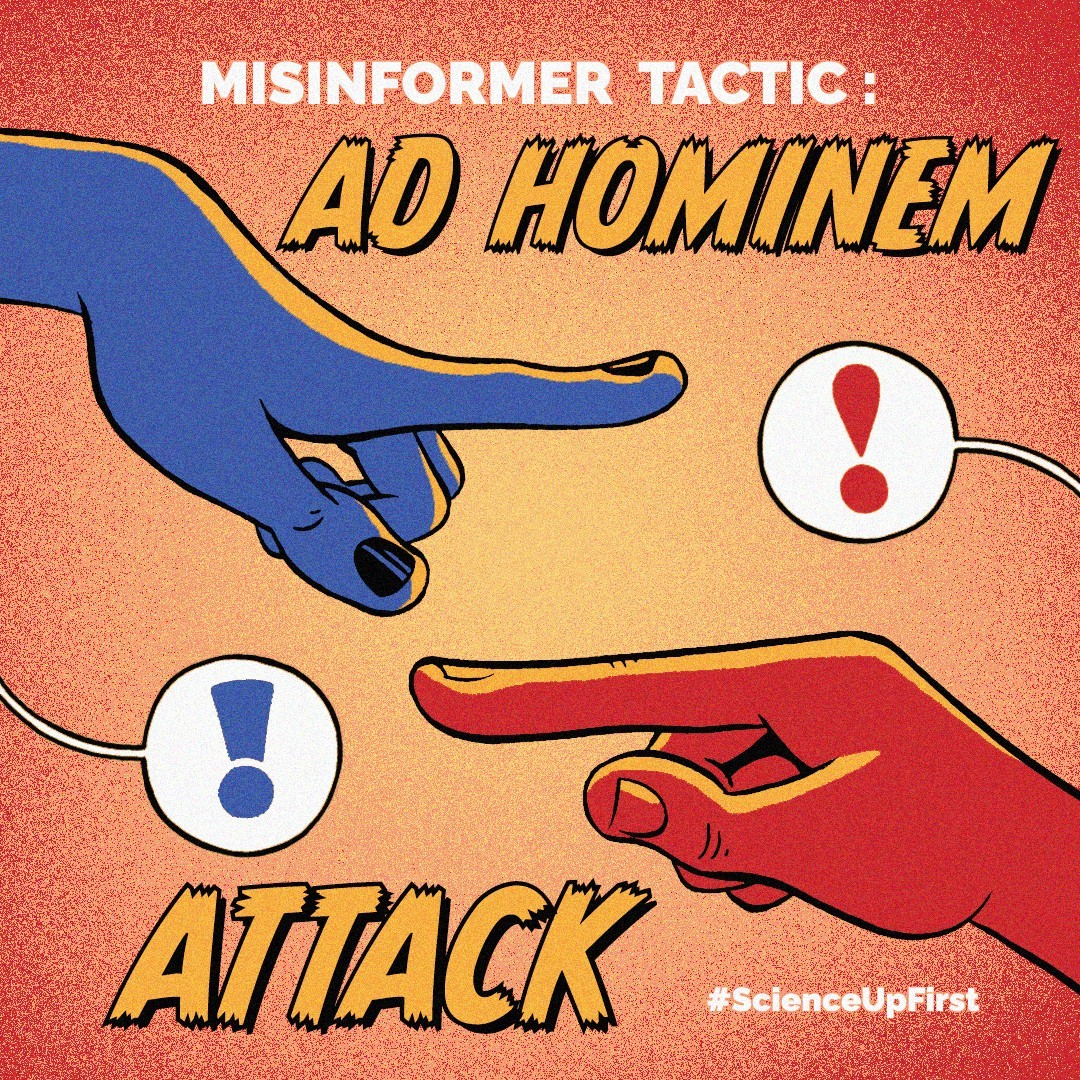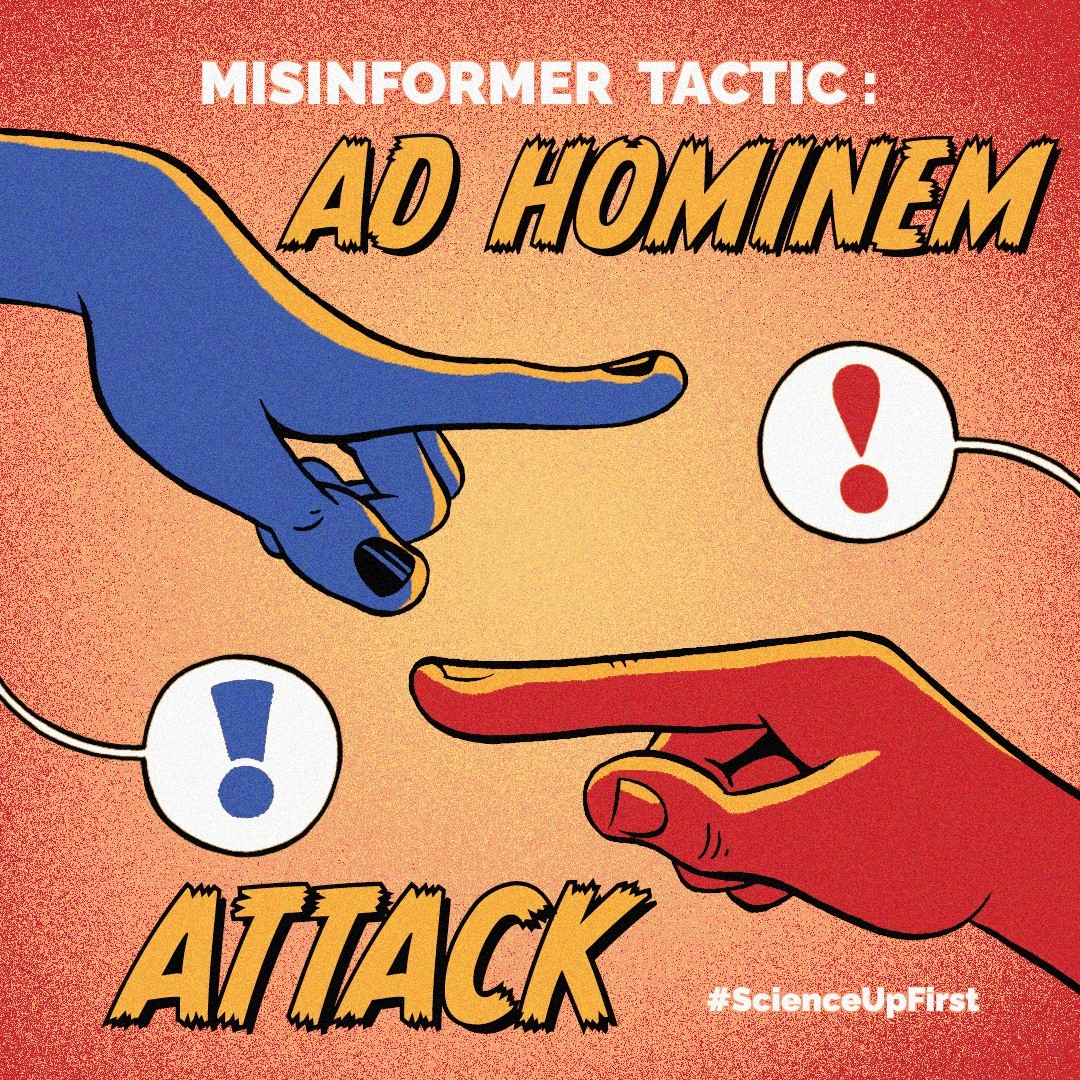
Attacking someone’s character does not invalidate their arguments.
Ad Hominem comes from the Latin ‘to the person”. An Ad Hominem attack is used to discredit the person to invalidate their argument, rather than discrediting the argument itself (1,2). By doing so misinformers are calling for people’s emotion, which is a very powerful tool (3,4).
There are many types of Ad hominem arguments (3,5). Let’s use an example to explain each type. In this example you argue that “chocolate cake is the best kind of cake!”
- An abusive argument would directly attack you. “Well, your shoes are ugly, so how would you know if chocolate cake is the best type of cake?”
- A credential fallacy argument would discredit your knowledge → “You don’t own a bakery so what would you know about cake anyway?”
- A circumstantial argument will question the veracity of your argument because of your motive → “You’re only saying that because your neighbour owns a bakery.”
- A guilt by association argument will discredit you because of your association with something negative → “Criminals also eat chocolate cakes so you must be a criminal”
- A “Tu Quoque” (from the Latin “so are you”) argument will use your past actions to discredit your argument. “Well, I’ve seen you eat vanilla cake before so clearly you’re lying.”
So how do you deal with an Ad Hominem attack? You can:
- Acknowledge the attack
- Point out the irrelevance of the attack
- Simply ignore the attack
“I understand that you don’t like my shoes, but that has nothing to do with chocolate cake.”
Thanks to Jordan Collver for collaborating with us on this post. Jordan is an illustrator and science communicator specializing in using the visual and narrative power of comics to explore themes of science, nature, and belief.
Check out his work on his website (jordancollver.myportfolio.com) and on Twitter (@JordanCollver)
Share our original Tweet!
Attacking someone’s personality does not invalidate their arguments. Yet that is what the Ad Hominem attack (from the Latin ‘to the person”) attempts to do!#ScienceUpFirst
[1/9] pic.twitter.com/9dWxujmTJ9
— ScienceUpFirst | LaScienced’Abord (@ScienceUpFirst) August 18, 2022
View our original Instagram Post!
View this post on Instagram




